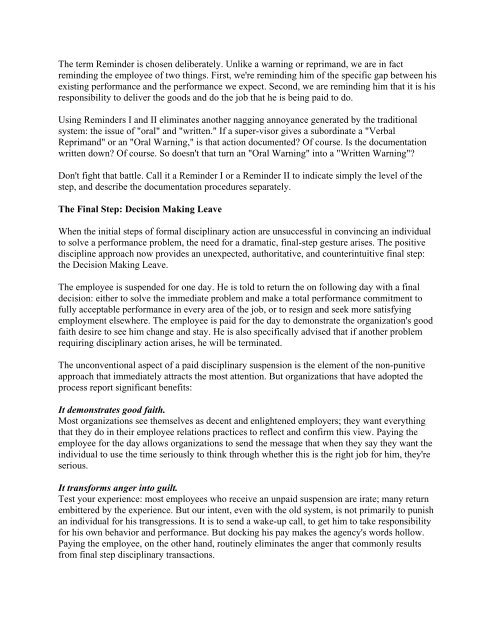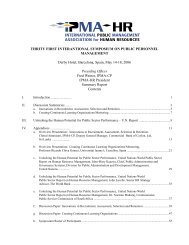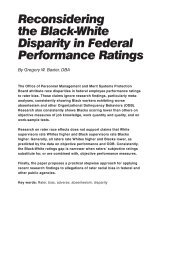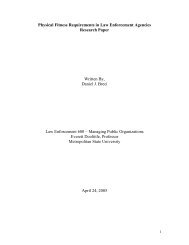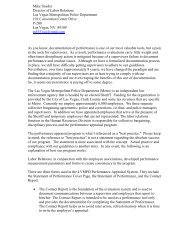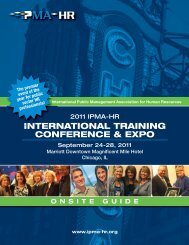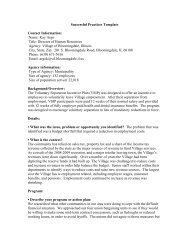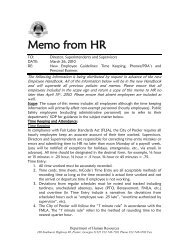Public Sector Organizations: Today's Innovative Leaders In ... - IPMA
Public Sector Organizations: Today's Innovative Leaders In ... - IPMA
Public Sector Organizations: Today's Innovative Leaders In ... - IPMA
- No tags were found...
Create successful ePaper yourself
Turn your PDF publications into a flip-book with our unique Google optimized e-Paper software.
The term Reminder is chosen deliberately. Unlike a warning or reprimand, we are in factreminding the employee of two things. First, we're reminding him of the specific gap between hisexisting performance and the performance we expect. Second, we are reminding him that it is hisresponsibility to deliver the goods and do the job that he is being paid to do.Using Reminders I and II eliminates another nagging annoyance generated by the traditionalsystem: the issue of "oral" and "written." If a super-visor gives a subordinate a "VerbalReprimand" or an "Oral Warning," is that action documented? Of course. Is the documentationwritten down? Of course. So doesn't that turn an "Oral Warning" into a "Written Warning"?Don't fight that battle. Call it a Reminder I or a Reminder II to indicate simply the level of thestep, and describe the documentation procedures separately.The Final Step: Decision Making LeaveWhen the initial steps of formal disciplinary action are unsuccessful in convincing an individualto solve a performance problem, the need for a dramatic, final-step gesture arises. The positivediscipline approach now provides an unexpected, authoritative, and counterintuitive final step:the Decision Making Leave.The employee is suspended for one day. He is told to return the on following day with a finaldecision: either to solve the immediate problem and make a total performance commitment tofully acceptable performance in every area of the job, or to resign and seek more satisfyingemployment elsewhere. The employee is paid for the day to demonstrate the organization's goodfaith desire to see him change and stay. He is also specifically advised that if another problemrequiring disciplinary action arises, he will be terminated.The unconventional aspect of a paid disciplinary suspension is the element of the non-punitiveapproach that immediately attracts the most attention. But organizations that have adopted theprocess report significant benefits:It demonstrates good faith.Most organizations see themselves as decent and enlightened employers; they want everythingthat they do in their employee relations practices to reflect and confirm this view. Paying theemployee for the day allows organizations to send the message that when they say they want theindividual to use the time seriously to think through whether this is the right job for him, they'reserious.It transforms anger into guilt.Test your experience: most employees who receive an unpaid suspension are irate; many returnembittered by the experience. But our intent, even with the old system, is not primarily to punishan individual for his transgressions. It is to send a wake-up call, to get him to take responsibilityfor his own behavior and performance. But docking his pay makes the agency's words hollow.Paying the employee, on the other hand, routinely eliminates the anger that commonly resultsfrom final step disciplinary transactions.


